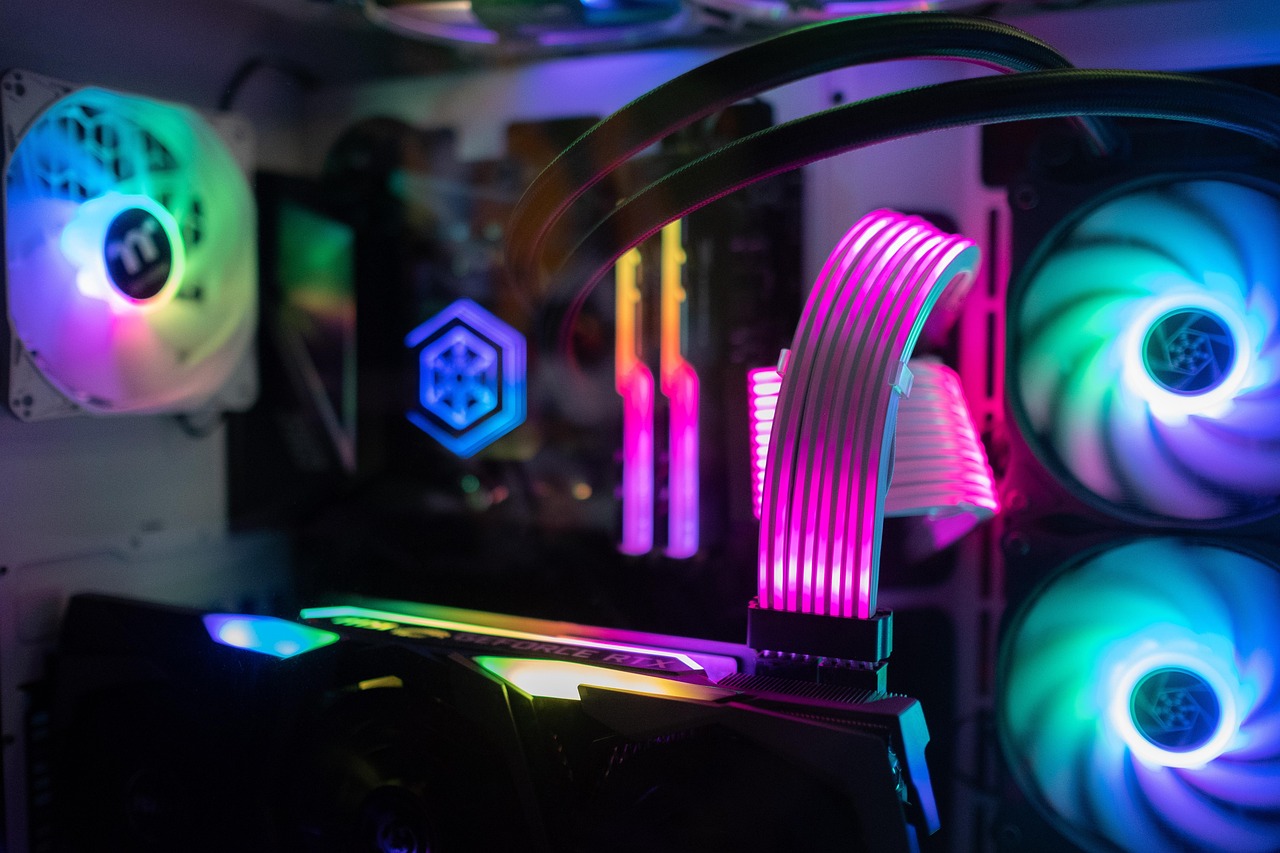PC gaming continues to dominate the entertainment world in 2025. Whether you’re a competitive esports player, a casual gamer, or a creator streaming on Twitch or YouTube, your PC’s performance can make or break your experience.
But here’s the good news: You don’t need to build an entirely new rig from scratch to game better. With a few smart PC gaming upgrades, you can drastically enhance graphics, boost speed, reduce lag, and improve your overall gaming experience.
In this article, we’ll dive into 7 powerful things you can add to your PC to make it more gaming-ready — from core components to peripherals that offer an edge.
1. Upgrade Your Graphics Card (GPU)
Why it matters:
The GPU (Graphics Processing Unit) is the heart of any gaming system. It’s responsible for rendering high-quality visuals, smooth frame rates, and supporting technologies like ray tracing and DLSS (Deep Learning Super Sampling).
Best 2025 Picks:
- NVIDIA RTX 4000 Series or newer
- AMD Radeon RX 7000 Series
- Look for 12GB+ VRAM for high-resolution or multi-monitor setups
Bonus Tip:
Check your monitor’s resolution and refresh rate before buying a GPU. There’s no point investing in a high-end graphics card if your screen can’t keep up.
2. Install a Solid State Drive (SSD) — or a Faster One
Why it matters:
If you’re still using a hard drive (HDD), you’re holding your system back. Even budget SSDs are significantly faster at loading games, booting Windows, and reducing stuttering caused by texture loading.
Upgrade Options:
- SATA SSD – Affordable and much faster than HDDs
- NVMe SSD (PCIe 4.0 or 5.0) – Ultra-fast speeds for newer games and open-world titles
- Recommended: 1TB or higher, especially if you play large AAA games like Starfield or Cyberpunk 2077
Bonus Benefit:
SSD upgrades don’t just help games — they improve everything from app performance to OS responsiveness.
3. Add More RAM (and Faster RAM)
Why it matters:
Your system needs sufficient memory to handle games, background processes, Discord, OBS, Chrome tabs, and more.
Recommended Specs for 2025 Gaming:
- 16GB DDR4 or DDR5 RAM minimum
- 32GB is ideal for modern gaming, streaming, or multitasking
- Speed matters too: 3200 MHz (DDR4) or 6000 MHz (DDR5) and above
Pro Tip:
Make sure your motherboard supports the type and speed of RAM you’re installing. Always install in dual-channel for optimal performance.
4. Upgrade Your CPU (If It’s a Bottleneck)
Why it matters:
The CPU (Central Processing Unit) handles game logic, physics, AI, and background tasks. If it’s outdated, your GPU won’t perform at its best — a common bottleneck issue.
Best CPUs for Gaming (2025):
- Intel Core i5/i7/i9 13th/14th Gen
- AMD Ryzen 5/7/9 7000 Series
- Focus on higher core counts (6+ cores) and high single-core performance
Signs You Need a New CPU:
- GPU usage is low during gaming
- Games stutter during heavy CPU tasks
- System is sluggish even with a new GPU and SSD
5. Invest in a High Refresh Rate Monitor
Why it matters:
Even with powerful hardware, your gameplay can look choppy if your monitor is capped at 60Hz. A high refresh rate display (120Hz, 144Hz, 165Hz, or 240Hz) allows your hardware to shine, delivering ultra-smooth visuals.
What to Look For:
- 144Hz or higher refresh rate
- 1ms response time
- G-SYNC or FreeSync support
- 1080p for competitive gamers, 1440p or 4K for cinematic experiences
Bonus Benefit:
Upgrading your monitor improves productivity, streaming, and even day-to-day browsing.
6. Improve Cooling (Air or Liquid)
Why it matters:
Gaming pushes your components hard, especially the GPU and CPU. If your system runs hot, it can lead to thermal throttling, which reduces performance, or even long-term damage.
Cooling Upgrades to Consider:
- Aftermarket air coolers (Noctua, be quiet!, Cooler Master)
- AIO liquid cooling systems (Corsair, NZXT, Arctic)
- Extra case fans for airflow
- Upgraded thermal paste for CPU and GPU longevity
Cooling = More Than Just Temps:
A well-cooled system is also quieter and often looks better with proper RGB or cable management.
7. Add High-Quality Gaming Peripherals
Why it matters:
The gear you use to interact with your games can dramatically affect performance, accuracy, comfort, and immersion.
Must-Have Gaming Peripherals:
Gaming Mouse
- DPI adjustment for better precision
- Ergonomic design and low latency
- Brands: Logitech, Razer, Glorious
Mechanical Keyboard
- Tactile feedback
- Fast actuation for competitive gaming
- Look for hot-swappable switches and RGB options
Gaming Headset
- Surround sound for positional awareness
- Detachable or high-quality mic
- Lightweight design for long sessions
Game Controller
- Ideal for racing, sports, or platformers
- Xbox Elite, PS5 DualSense, or 8BitDo for retro gamers
Ergonomic Gaming Chair or Desk
- Comfort improves focus and reaction time
- Reduces fatigue during long sessions
Bonus Tips to Get the Most From Your Gaming PC
Even with upgraded hardware, optimization is key. Here are quick wins:
- Keep drivers updated (especially GPU and chipset)
- Enable Game Mode in Windows
- Tweak in-game settings for best performance/visual balance
- Use performance overlays to spot bottlenecks
- Undervolt/overclock carefully for improved thermals or FPS
Final Thoughts
Upgrading your gaming PC doesn’t mean emptying your wallet for a full rebuild. Instead, focus on adding the right components and peripherals that will give you the most noticeable improvement in performance and immersion.
Whether you’re aiming for higher frame rates, faster load times, or a more comfortable setup, these seven upgrades — from a new GPU to a better gaming chair — will help you get more from every game you play.


